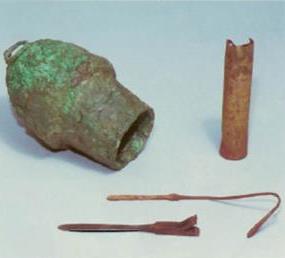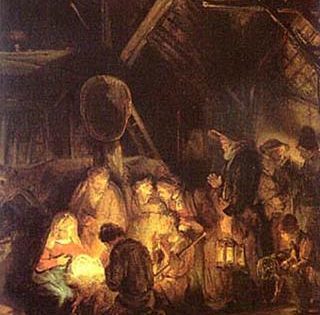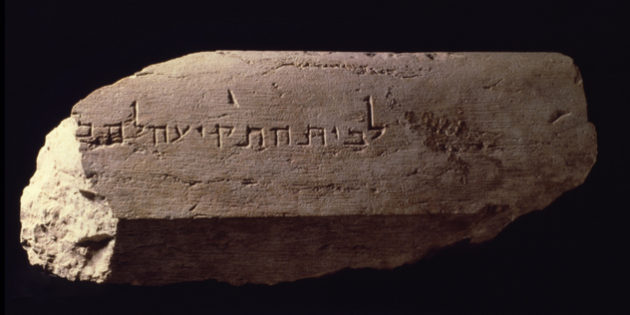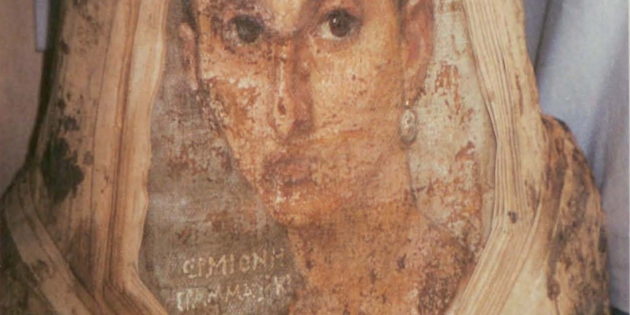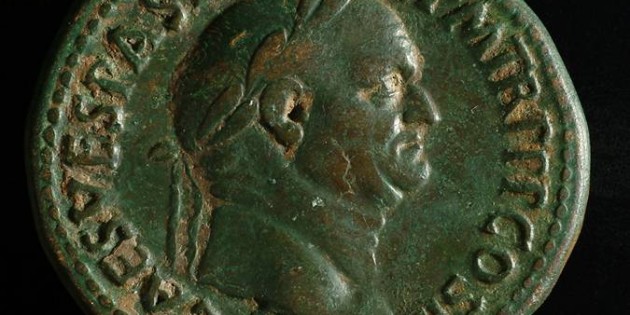Home » Bible and Beyond » Roman Period I
Roman Period I
The presence of these medical instruments may indicate the presence of a Roman military hospital at Masada. See also- Hurvitz, Gila, The Story of Masada; Discoveries from the Excavations. Provo, Utah- BYU Studies, 1997.
Calendar The pace of life- detail of a calendar c. 25 CE. Weeks did not exist; days of rest were religious feast days (a day of work was sacrificed to the gods), distributed throughout the year. On feast days magistrates, free men, students, slaves and animals all ceased work. The word LVDI that appears in […]
The Birth of Jesus by Rembrandt “This is how the birth of Jesus Christ came about- His mother Mary was pledged to be married to Joseph, but before they came together, she was found to be with child through the Holy Spirit. ” – Matthew 1-18 It is difficult to date with precision the exact […]
An Inscription from the Temple – “Tki’ah!” Place of the Trumpeting Place of the Trumpeting as found Date- 4 CE Current Location- Israel Museum, Jerusalem, Israel Language and Script- Hebrew, alphabetic General Information- • Beginning in 1968, Israeli archaeologist Benjamin Mazar conducted excavations at the southwest corner of the Temple Mount in Jerusalem, exposing the […]
Paul’s Jail In 1997 Prof. Yosef Porath uncovered a a Roman complex in Caesarea where he believes Paul was jailed before being taken to Rome for trial and eventual execution. Mosaic floor inscription reads- “Good luck to the assistants of the office of the guards.” “Strata- Imperial Slammer Identified; Caesarea Complex May Have Been Paul’s […]
Coin of Orodes II obverse Coin of Orodes II reverse Silver drachm of Orodes II. When Parthian King Orodes II was victorious in a battle against the Romans in 53 BCE, Mattathias sought his aid in occupying Jerusalem. The alliance, however, was short lived because Herod and the Roman legions recaptured the city and […]
Pottery with fiber wick First century BCE – first century CE The earliest occurrences of this type of lamp were in strata associated with Herod’s reign (37-4 BCE). However, the dating of the lamp has been modified by recent excavations. A similar lamp type was uncovered in the Jewish Quarter of Jerusalem, in strata relating […]
Ossuary of Nicanor Inscription on the Ossuary of Nicanor Roman/Jewish, from Jerusalem, currently in the British Museum. Limestone chests of this type were used to hold the bones of a dead person or family which were gathered together after burial in the soil, when the flesh had decomposed. This practice was common among the […]
Mummy Portrait of Hermione Grammatike Mummy portraits became popular in Roman Egypt in the first century BCE. They were painted on wooden panels and attached to the mummies. This mummy portrait was inscribed with the name of its subject, Hermione Grammatike. Grammatike means grammarian or teacher of classics. The portrait is the only known portrait […]
So proud were the Romans of their suppression of the First Jewish Revolt (66–70 C.E.) that for 50 years afterward they issued coins commemorating their victory, the Judea Devicta and Judea Capta coins. The obverse of the silver Judea Devicta coin depicts Emperor Vespasian (69–96 C.E.), who claimed victory over most of Judea in […]

